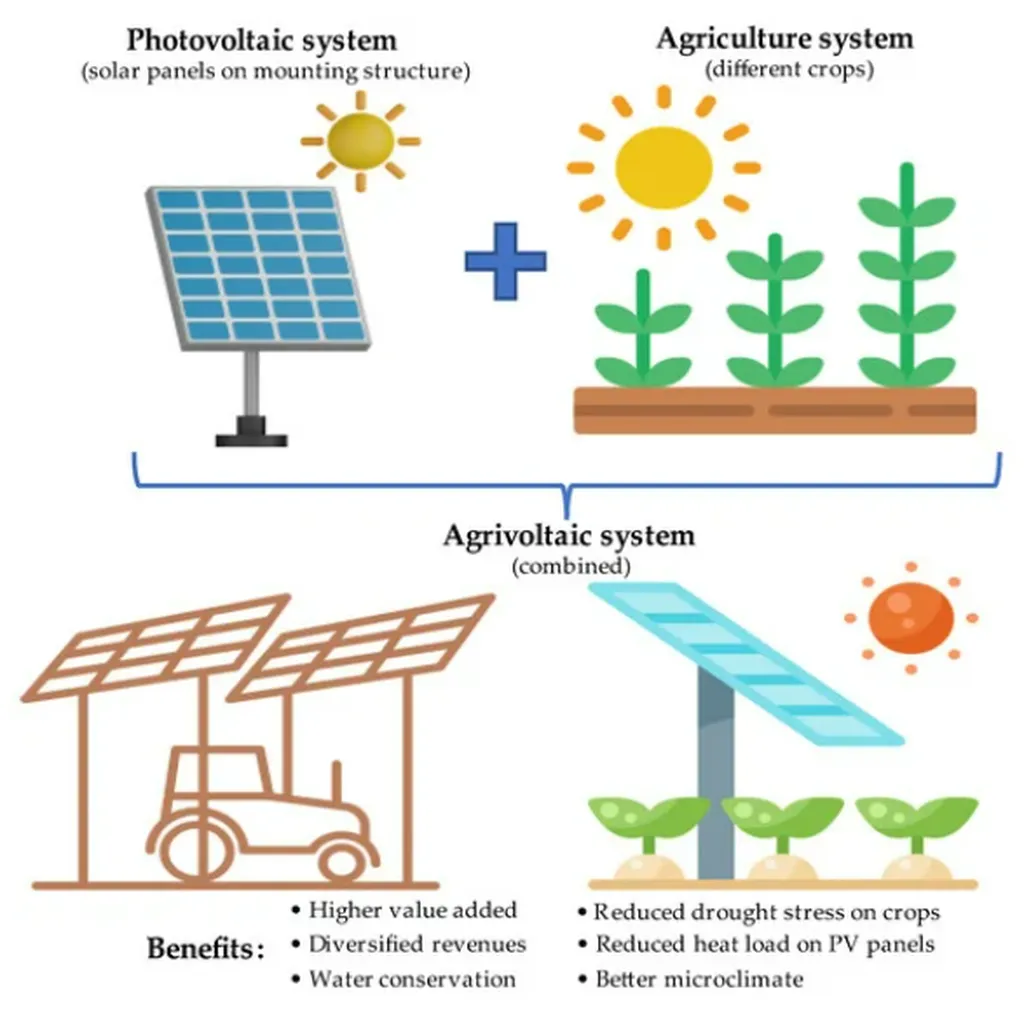In a groundbreaking development poised to reshape the agrivoltaic landscape, researchers have introduced a novel system that promises to harmonize food production and renewable energy generation. The Red Spectrum Splitting Concentrated Agrivoltaic (RSSCA) system, detailed in a recent study published in ‘PLoS ONE’ (translated to “Public Library of Science ONE”), offers a sophisticated solution to the longstanding conflict between agricultural land use and solar energy infrastructure expansion.
At the heart of this innovation is a system designed to selectively direct specific wavelengths of sunlight, ensuring optimal conditions for both crops and solar energy production. “The RSSCA system uses a Fresnel lens and dichroic mirror to concentrate solar radiation and split the spectrum,” explains lead author Ngoc-Hai Vu. “Red light, crucial for rice growth, is transmitted to the crops, while the remaining wavelengths are directed to high-efficiency multi-junction solar cells.”
This dual-purpose approach addresses a critical limitation of conventional photovoltaic (PV) systems, which often reduce crop yields due to shading and suboptimal light conditions for photosynthesis. The RSSCA system, however, delivers a photoelectric conversion efficiency of 31.2% and maintains adequate Daily Light Integral (DLI) levels for rice cultivation in high-sunlight regions such as Hanoi and Ho Chi Minh City.
The implications for the energy sector are profound. In regions like Ho Chi Minh City, electricity production with RSSCA peaks at 2790 W/m²/day, outperforming traditional PV setups by 3-5 times. “This system offers improved light uniformity, better land-use efficiency, and significantly higher electricity generation,” Vu notes. The enhanced performance not only boosts energy output but also ensures sustainable agricultural practices, making it a viable solution for tropical and subtropical areas where direct sunlight is abundant.
However, the system’s performance decreases in regions with limited direct sunlight, such as Seoul in winter. This limitation underscores the need for further research and adaptation to optimize the RSSCA system for diverse climatic conditions. Nonetheless, the potential commercial impacts are substantial. By enabling simultaneous food production and renewable energy generation, the RSSCA system could revolutionize land use practices, particularly in regions where agricultural land is under pressure from expanding solar energy infrastructure.
The study’s findings suggest that the RSSCA system is well-suited for tropical and subtropical areas, presenting a viable solution for enhancing both food production and renewable energy generation on shared land. As the world grapples with the challenges of climate change and food security, innovations like the RSSCA system offer a glimpse into a future where technology and agriculture coexist harmoniously.
This research not only advances our understanding of agrivoltaic systems but also paves the way for future developments in the field. By integrating cutting-edge optical simulations and analytical modeling, the study provides a robust framework for optimizing energy and agricultural outputs. As the energy sector continues to evolve, the RSSCA system stands as a testament to the potential of innovative technologies in addressing global challenges.

